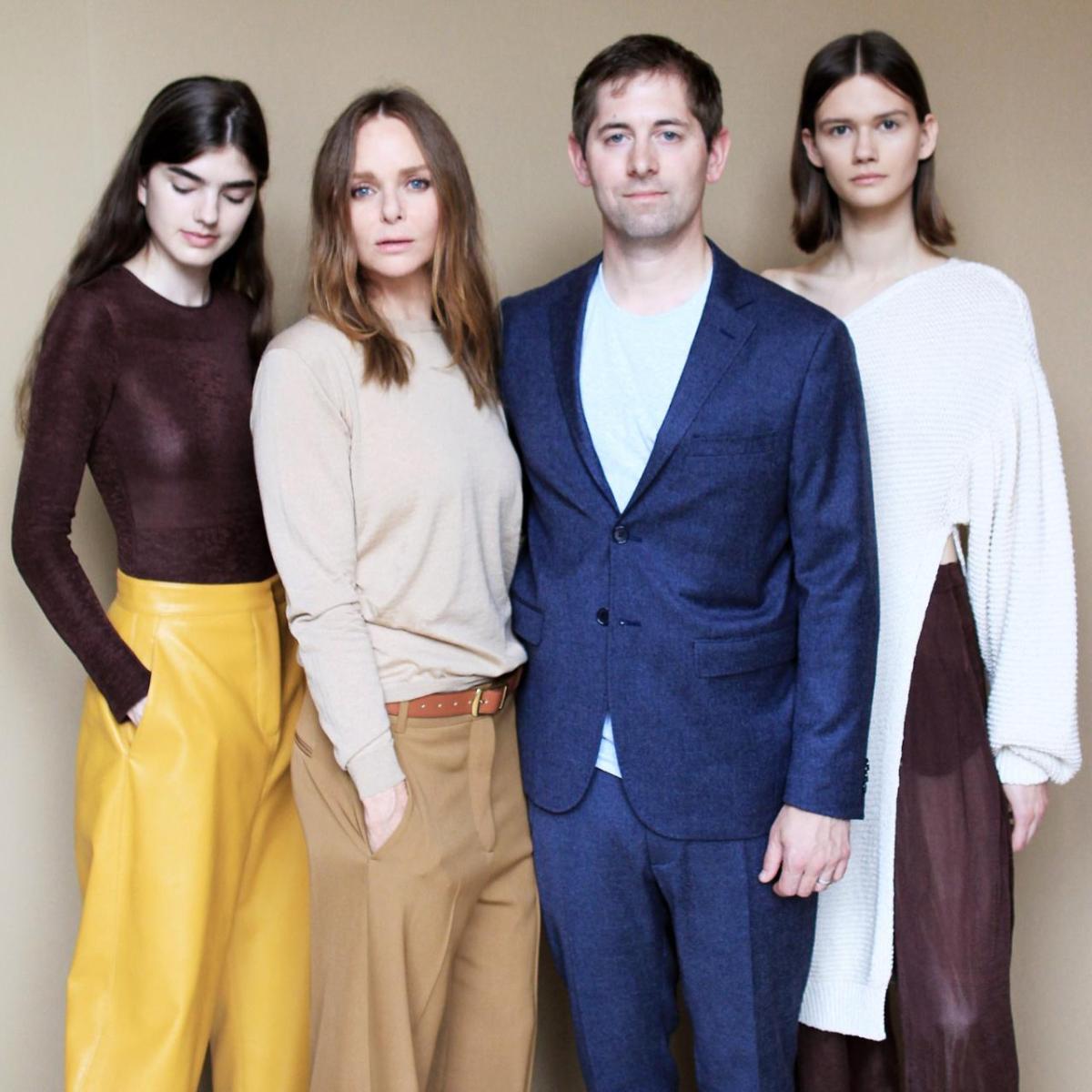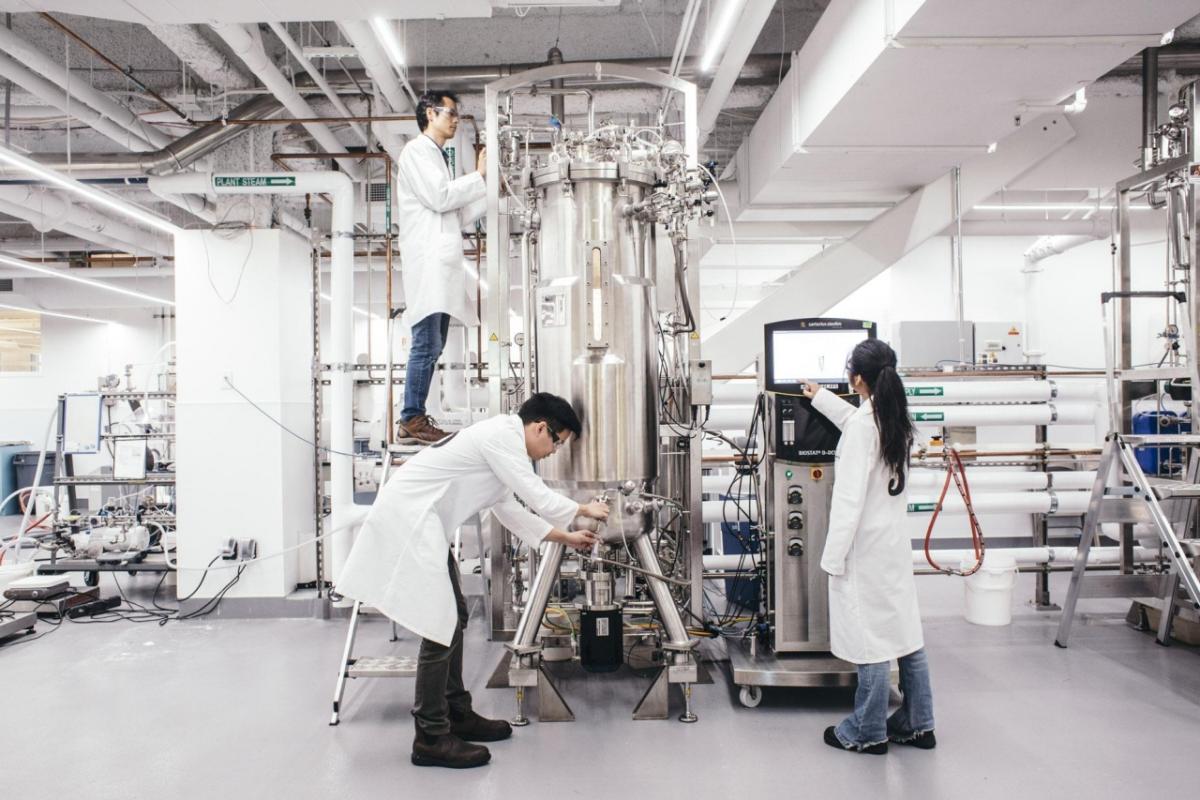Leather From Mushrooms? Biotech Goes High Fashion
A new Stella McCartney handbag made of cutting-edge, lab-grown material is both super-supple and easy on the environment.
Can one clever little purse set the fashion business on a new, Earth-friendly path?
None other than haute couture designer Stella McCartney hopes so. For the Victoria and Albert Museum’s intriguing “Fashioned from Nature” exhibit in London, McCartney made a chic black handbag with chain trim from the unlikeliest of materials — mycelium, the hairy, root-like fungal mass from which mushrooms emerge.
The bag is just the latest collaboration between McCartney — a devotee of sustainability before most fashion-world players knew what the word meant — and materials innovation company Bolt Threads.
McCartney and Bolt, which grows synthetic silk as well as synthetic leather in its bubbling tanks and humidity-and-nutrient-controlled pans, aim to spur a fashion-business makeover that’s as critical to the industry’s health as it is to the planet’s.
Why? A recent study by the Ellen MacArthur Foundation found that the equivalent of a garbage truck of textiles is landfilled or burned every second of every day, while only 1 percent of clothing is recycled. At the same time, propelled by a burgeoning global middle class, the fast-fashion trend and wasteful habits, demand for clothing is projected to more than triple from current levels by 2050.
At that torrid pace, the fashion biz could gobble up a quarter of the world’s annual carbon budget by 2050, while resource scarcity, climate change and pollution could cut the industry’s annual profits by $52 billion.
“It is increasingly clear that the current way the fashion industry operates is worn out, with signs ranging from changing customer behaviors to increased awareness of waste and pollution,” says Francois Souchet, Make Fashion Circular lead at the Ellen MacArthur Foundation. “More and more businesses are recognizing the need to change.”
Goodbye to petroleum and toxic dyes
That’s where Bolt — and the strategic partnerships it’s forging with sustainability pioneers like McCartney — come in.
Bolt is on a mission to set the notoriously pollution- and waste-producing fashion industry — which has long relied on petroleum-based synthetics, toxic dyes, chemical whiteners and fabric finishes, as well as thirsty, bug-loving crops like cotton — on a less poisonous path, while also delighting fashionistas.
“This market is hungry for innovation,” says Jamie Bainbridge, Bolt’s vice-president of product development. “It really needs to change the way it makes and sells products.”
Fermented proteins that mimic silk
Founded in 2009 by three graduate students based on their research on synthetic spider silk at the University of California at Berkeley and San Francisco, the Emeryville, Calif.-based startup has raised $213 million to develop a broad array of products and bring them to market.
The first, Microsilk, is made by fermenting in large vats of yeast, sugar and water proteins that Bolt developed based on silk proteins found in nature. Bolt is working with outdoor clothing retailer Patagonia to develop Microsilk-based products and partnered with McCartney to create dresses and other apparel, which have been showcased in museum exhibits.
Bolt is also creating its own products, starting with small runs of hats and neckties. In July 2017, Bolt acquired retailer Best Made Co., a high-end apparel and lifestyle brand, to sell its goods directly to consumers. A limited-edition Microsilk "Cap of Courage" made of rambouillet wool and synthetic spider silk is its first promising (albeit expensive) offering.
A new kind of magic mushroom
To bring its second eco-fabric, synthetic leather Mylo, to market, Bolt partnered with Ecovative, which originally developed the material as a soft, flexible foam for packaging. Bolt grows its mycelium cells in warehouses, feeding them corn stover (the waste from corn production) and other nutrients and carefully controlling temperature, humidity and carbon dioxide to induce them to grow into dense, fibrous mats. The mats are then compressed, cut into slices, tanned and dyed.
But since mycelium doesn’t decompose the way animal hide does, it doesn’t need to be tanned in the traditional sense — i.e., suffused with salt and toxic chemicals to arrest that decomposition. Bolt follows up its gentler version of tanning by using English Breakfast tea as a natural dye to color the debut Mylo. The material can be produced in a just a few days--and it's biodegradable.
The nasty truth about most “vegan leather”
Bolt argues that Mylo is more sustainable than leather, which, unless the cows are pasture-raised, requires large amounts of water, land and fertilizer. But the founders also point out that Mylo is more sustainable than other synthetic leathers, which are made from petroleum and toxic chemicals. The company plans to do a sustainability analysis before any large commercial rollout.
“By addressing different markets, Microsilk and Mylo show the power of the bio-materials platform we're building,” says Mitch Heinrich, director of special projects at Bolt Threads.
That power was put to the test this year, when Bolt Threads VP Bainbridge first brought Mylo to a leather master in Bergamo, Italy, who makes sample bags for Stella McCartney. "It was really exciting to take one of the first pieces of this material to a real craftsman," Bainbridge recalls. “Especially when he said, ‘It feels like leather.’”
Fashionistas will soon be able to judge for themselves. In June, Bolt will start offering its own Mylo bag for pre-order.



